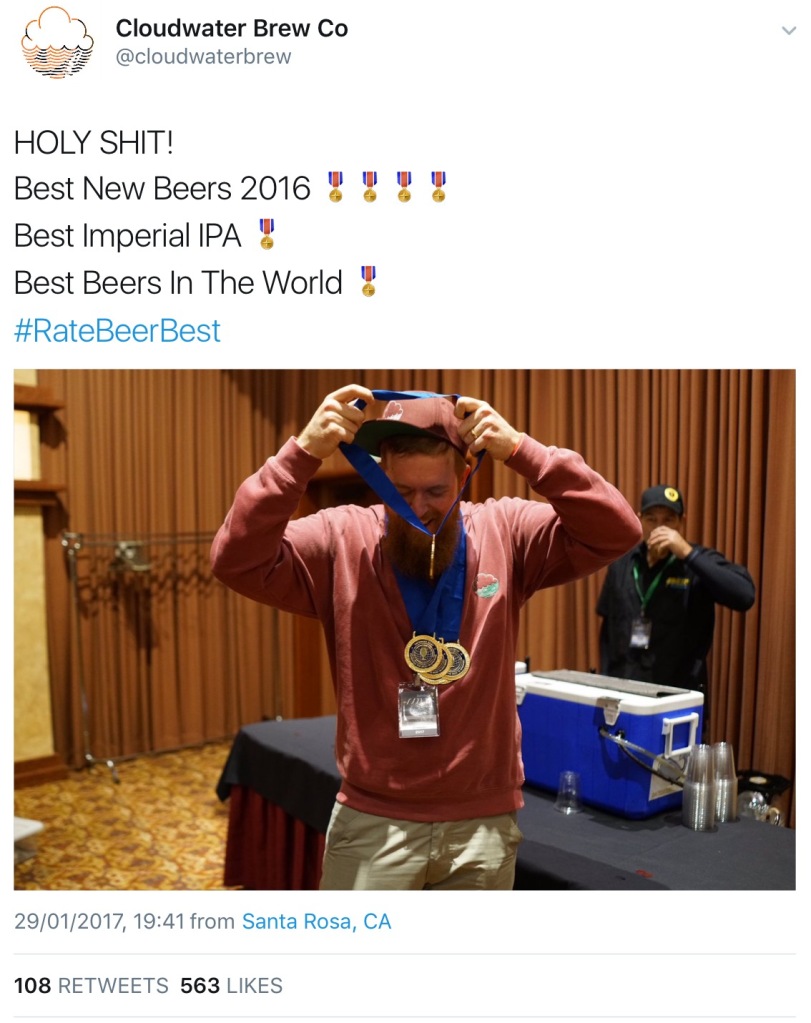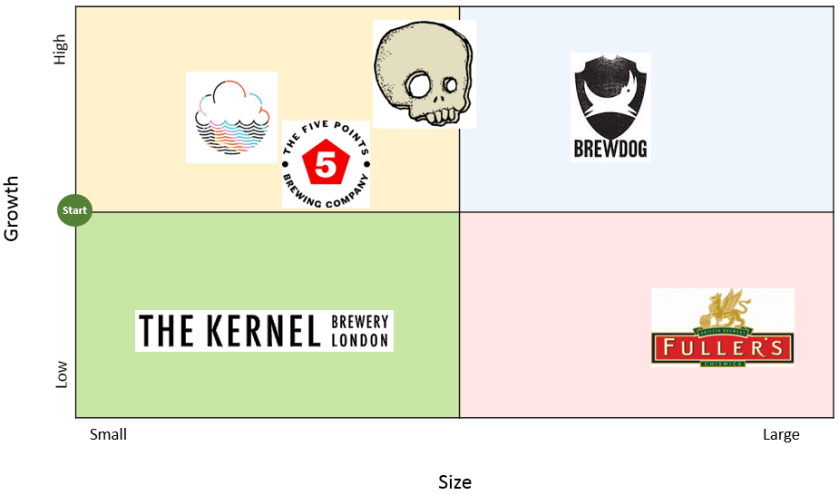Cloudwater kings of Ratebeer, Brewery Growth Models, and the Ealing Park Tavern, Home of Long Arm Brewing
- Cloudwater: the Manchester-based craft brewer are the kings of Ratebeer, the popular beer rating site/app after picking up a swag of awards in a ceremony in Santa Rosa California on Sunday 29th January. Full details of the results will be released throughout this week, but according to their twitter feed they picked up at least 8 awards including best brewery in the UK. To be fair, I am unsure of who makes up the Ratebeer community here in the UK, but the award does carry certain weight, especially in the US where Ratebeer is more popular. Critics however compare this to a popularity contest. Either way, it’s a global awards ceremony that comes with a certain gravitas and I’m sure for them to pick up these awards in from a room full of their global peers gives them great satisfaction. As a result, I believe it should be celebrated.

- Brewing growth models: the ‘year in review’ blogs of a number of craft breweries opened the kimono on the growth curve some find themselves on. I’ve been reflecting on the challenges these breweries are likely to be considering, plus those on different growth profiles using a bastardised version of the BCG growth matrix. The BCG growth matrix is a strategic tool designed for large corporations with a portfolio of businesses to use to determine strategic direction. In my growth matrix, the x axis is relative size of the brewery and on the y axis is the growth the brewery is experiencing.

If we start in the bottom left, I’ve dubbed this group the Ateliers. This is breweries that are relatively small in scale and with a low growth profile. The archetype Atelier for me is The Kernel Brewery. I’ve interviewed Evin from The Kernel in a previous podcast and he makes it clear he believes the brewery could be capable of growing to be 15-20 times the size but is happy with the current size of the brewery, the quality of the beers they are making and the conversations he can have with his customers. The key challenge for Ateliers is finding a sustainable differentiator and for The Kernel, this is the stunning quality of their beers. The Stars are those breweries that are relatively small but are going through significant growth. Think Cloudwater, Five Points and Beavertown. Interestingly, they are all going about that growth in slightly different ways. Cloudwater are streamlining beer dispense to just can and keg and focusing on maximising the efficiency of their brewing. Five Points are facing growing pains in their current site and have started contract brewing to increase capacity. Beavertown are maximing their brewing schedule and expanding their current presence with one eye on moving to a big new premises in the near future. For these breweries the key challenge is likely to be managing the financials. When making capital investments a sharp eye on cash flow and expense management is critical. Ensuring the quality and consistency of their beers don’t suffer is another key challenge. The Cannonballs are those that have relative size and are also going through significant growth. BrewDog are the ultimate Cannonballs. They continue to expand their brewing capacity in Ellon, have set out plans to create Overworks, their Sour facility, expanding their bar network both domestically and abroad as well as launching BrewDog USA. That is a huge agenda and good management, governance and control is critical to ensure they are delivering against all their plans. And finally the Cows. These are relatively large breweries experiencing low growth. Their challenge is how to push the business back into growth mode (or restructure). Whilst I wouldn’t put Fullers into this category (they seem to be focused on expanding their range of pubs), many appear to be responding to this challenge by doing things like rebranding or creating craft ranges to try to tap faster growing segments of the market. Some feel like half-hearted attempts at change given that authentic and sustainable cultural and strategic change takes more than some new packaging.
- Ealing Park Tavern: after many aborted attempts, I finally made it to the Ealing Park Tavern for an early dinner on Saturday with the family. Its been on my to do list for some time, given its relatively close to where I live. Its also the home of Long Arm Brewing, the winner of RateBeers best new brewery in Greater London. For those unfamiliar, Long Arm Brewing is a new brewery that is part of the ETM Group, a restaurant and bar group with 12 venues across London and one venue in Suffolk. To date, I believe they only sell their beer in their venues. They also previous owned The Gun in the Docklands, which they sold in June 2016 to Fullers. The Ealing Park Tavern is a lovely pub, adorned with taxidermy and open fires, separate formal and informal dining areas, a beer garden, and a long bar with around 12 keg lines (including Beavertown Gamma Ray and Four Pure Flatiron Red), 6 cask lines and an extensive can and bottle selection (I recall seeing Moor cans and bottles of Wild Beer Co). We sat in the formal dining area where the ambiance was lovely, the menu engaging and the service attentive. I had a pint of Thornbridge Lord Maples, a 4% cask bitter to start and a bottle of Wild Beer Millionaire with my braised Herdwick lamb serviced with sautéed sweetbreads, smoked aubergine, chick peas, chilli and apricots. My one criticism is that while they have an extension wine list to accompany the food menu, they don’t extend the same courtesy to their beer. All in all The Ealing Park tavern is pub with a pedigree beer and wine selection, excitable food menu and enjoyable ambiance.
